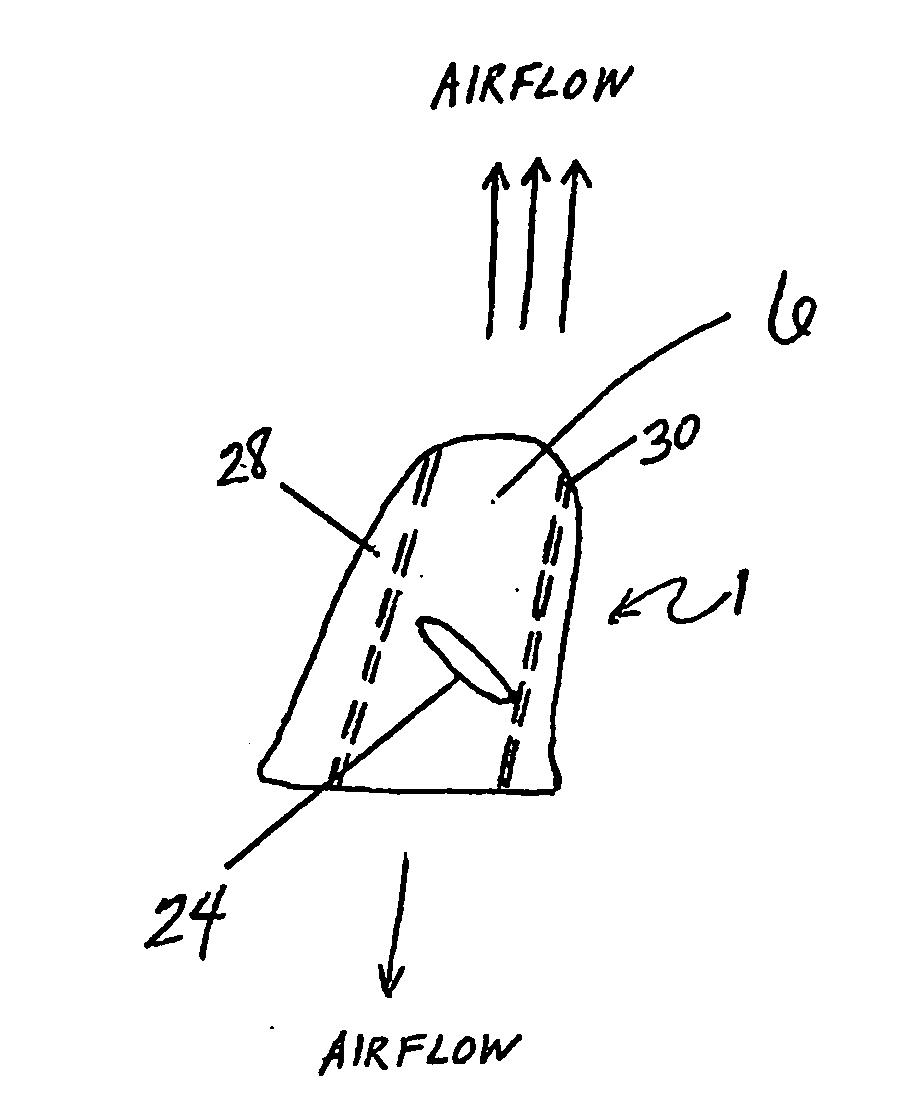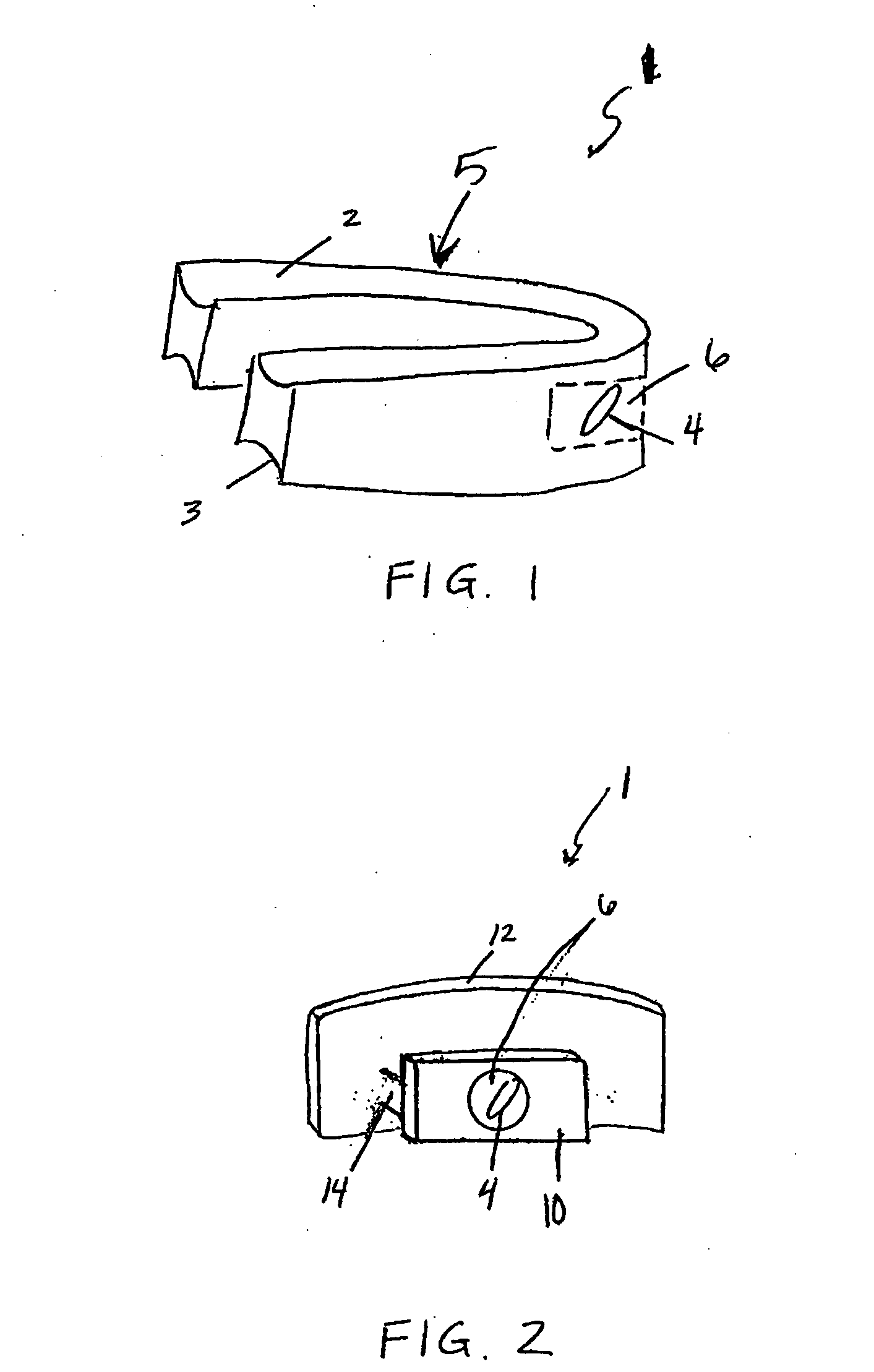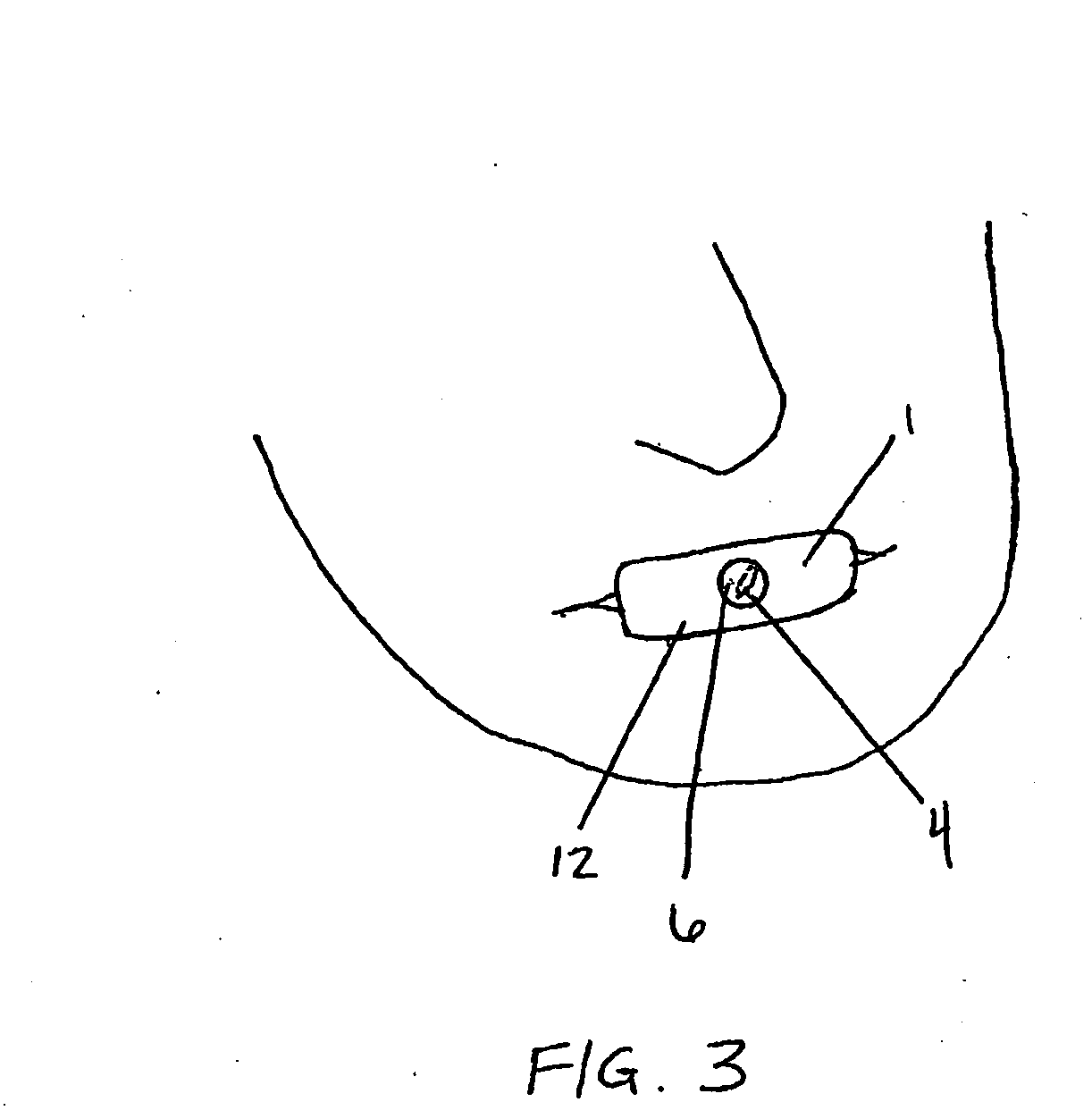Methods of treating respiratory disorders
a technology for respiratory disorders and treatment methods, applied in the field of medicine, can solve the problems of inability to adequately pump blood to the body including the lungs, inability to exercise intolerance, fluid retention, etc., and achieve the effect of inhibiting expiration
- Summary
- Abstract
- Description
- Claims
- Application Information
AI Technical Summary
Benefits of technology
Problems solved by technology
Method used
Image
Examples
examples
[0172] The following examples are offered by way of illustration and not by way of limitation.
A. Removable Application in the Oral Cavity
[0173] A respiratory device adapted for use in the oral cavity (e.g., any of the devices shown in FIGS. 1-3) may be placed into a subject's mouth by medical personnel or by the subject. The respiratory device may be secured in place by the subject's teeth, gums, tongue, lips, palate or shape of the oral cavity or surrounding anatomy including the jaw, nose, chin, or skin. The respiratory device may also (or alternatively) be secured by use of an adhesive, a securing strap, or by other holdfast. The use of an adhesive may further improve the seal between the device and the oral cavity. The device may be worn during the night or day, while the patient is awake or sleeping. In some cases, the device may be worn continuously for extended periods of time (e.g., minutes, hours, days). These devices are meant to provide benefits to subjects suffering f...
PUM
 Login to View More
Login to View More Abstract
Description
Claims
Application Information
 Login to View More
Login to View More - R&D
- Intellectual Property
- Life Sciences
- Materials
- Tech Scout
- Unparalleled Data Quality
- Higher Quality Content
- 60% Fewer Hallucinations
Browse by: Latest US Patents, China's latest patents, Technical Efficacy Thesaurus, Application Domain, Technology Topic, Popular Technical Reports.
© 2025 PatSnap. All rights reserved.Legal|Privacy policy|Modern Slavery Act Transparency Statement|Sitemap|About US| Contact US: help@patsnap.com



